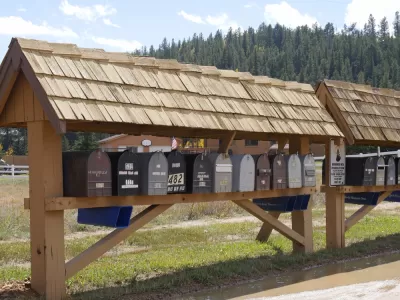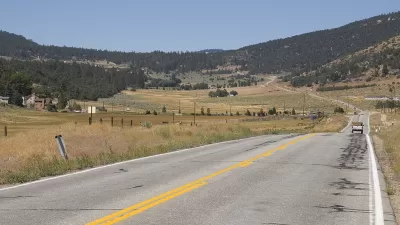"Lessons in New Ruralism" shares 20 case studies of prosperous rural communities from across the United States.

The New Ruralism Initiative is pleased to share stories of rural leadership, place-making, entrepreneurship, energy-generation, art-creation, and volunteerism that sustain the heart and soul of rural places. In its newly released report, Lessons in New Ruralism, The New Ruralism Initiative celebrates the rural renaissance in the making with twenty case studies of successful local initiatives in a wide variety of areas such as local foods, housing, energy, new approaches to cooperatives, community services and more.
New Ruralism articulates that rural communities, to prosper, need a synchronized sustainability focus in three areas: economic, environmental, and social. To thrive, rural planning, policy, and grassroots efforts must embrace new methods of economic sustainability, like cooperatives and the creative economy. They must uphold environmental sustainability, both protecting the land while stewarding working landscapes. And, they must invest in social sustainability, fostering community, strengthening their safety net, and nurturing active democracy. The weaving of these ideas together contributes to strong rural communities.
The Lessons in New Ruralism report represents communities from Washington to Maine. Takeaways that emerged from the case studies include:
- People-focused plans, policies, and projects have an outsized impact on small communities.
- With the right ingenuity, small towns can build high-quality livable-wage jobs that anchor residents and contribute to a growth in the local economy.
- To keep momentum going for long-term projects, organizations and groups must celebrate all the incremental wins along the way.
- Frequent, timely, clear, and direct communication is vital to the success of projects.
- Big changes in small communities often lead to a positive ripple effect.
Read the report for detailed case studies and additional insights.
FULL STORY: The New Ruralism Initiative - Sharing Stories Of New Ruralism

Maui's Vacation Rental Debate Turns Ugly
Verbal attacks, misinformation campaigns and fistfights plague a high-stakes debate to convert thousands of vacation rentals into long-term housing.

Planetizen Federal Action Tracker
A weekly monitor of how Trump’s orders and actions are impacting planners and planning in America.

In Urban Planning, AI Prompting Could be the New Design Thinking
Creativity has long been key to great urban design. What if we see AI as our new creative partner?

How Trump's HUD Budget Proposal Would Harm Homelessness Response
Experts say the change to the HUD budget would make it more difficult to identify people who are homeless and connect them with services, and to prevent homelessness.

The Vast Potential of the Right-of-Way
One writer argues that the space between two building faces is the most important element of the built environment.

Florida Seniors Face Rising Homelessness Risk
High housing costs are pushing more seniors, many of them on a fixed income, into homelessness.
Urban Design for Planners 1: Software Tools
This six-course series explores essential urban design concepts using open source software and equips planners with the tools they need to participate fully in the urban design process.
Planning for Universal Design
Learn the tools for implementing Universal Design in planning regulations.
Gallatin County Department of Planning & Community Development
Heyer Gruel & Associates PA
JM Goldson LLC
City of Camden Redevelopment Agency
City of Astoria
Transportation Research & Education Center (TREC) at Portland State University
Jefferson Parish Government
Camden Redevelopment Agency
City of Claremont





























